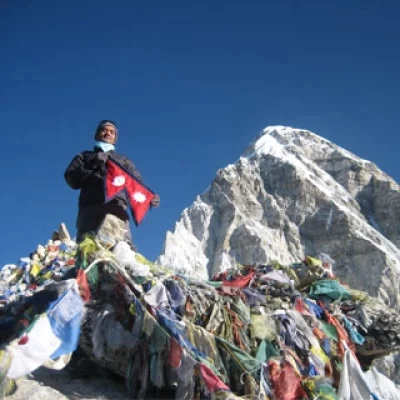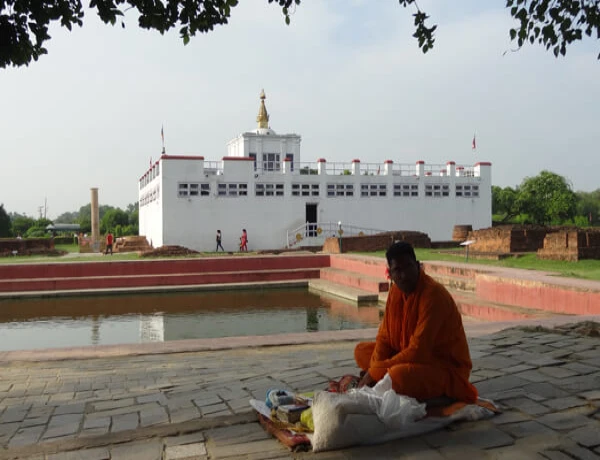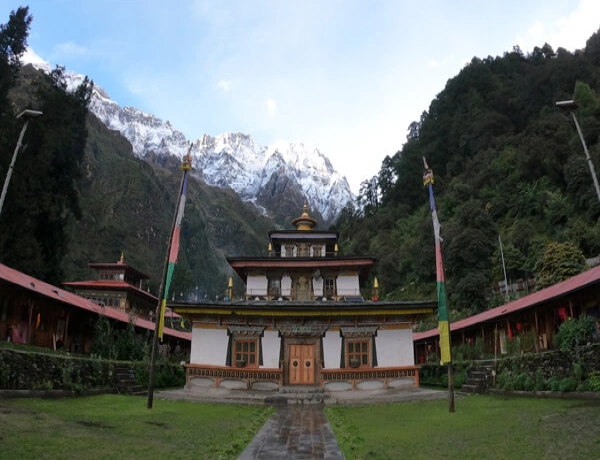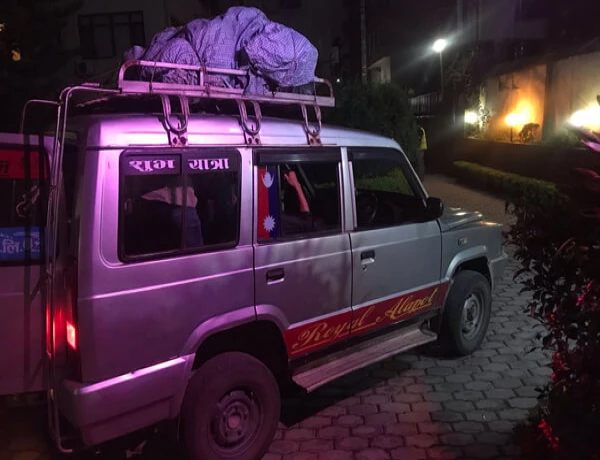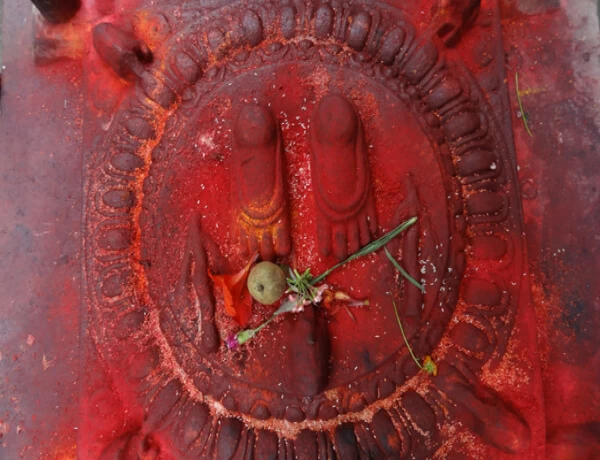Nepal is an ideal choice for trekking enthusiasts, offering an array of eye-catching trails that traverse through breathtaking landscapes. Most of the trending trekking trails at Everest Base Camp, Langtang, are nestled inside the country’s precious national parks and conservation areas, making trekking permits an essential requirement. Before heading out on a trekking adventure, you must be familiar with the necessary trekking permits and fees. So, this post is prepared to focus on trekking permits and fees in Nepal, providing vital information so that you can easily understand these requirements.
Trekking permits include more than just granting entry into the national park and conservation area. The permits serve as crucial elements for your safety during treks. So, there are other trekking permits for specific reasons and regions. The issuance of these permits serves a variety of purposes, including the promotion of responsible tourism, the support of local communities, and the preservation of trekking routes.
Other permits include TIMS (Trekkers’ Information Management System) authorizations, tracking trekkers, and assisting on the route. Moreover, the classification of some areas as restricted areas necessitates specialized permits to safeguard unique cultures and environmental heritage. Additionally, rural municipalities issue permits to support sustainable development.
Every permit plays a vital role in safeguarding trekkers, preserving the pristine culture and beauty of Nepal’s landscape, and ensuring responsible tourism practices. Now, let's talk in-depth about the required trekking permits and fees, along with the documents required and why they are important.
Why Trekking Permits Are Important in Nepal
Trekking permits serve a key role in ensuring a safe and sustainable trekking experience. Here are some reasons why trekking permits are important in Nepal. Trekkers need to comply with the following conditions:
- Environmental Conservation and Protection: Trekking permits help fund environmental efforts and conservation plans for national parks and protected areas.
- Cultural Preservation: Special permits in restricted areas help preserve the distinct culture and heritage of indigenous communities.
- Safety and emergency support: In case of an emergency, the authorities can track trekkers and assist, ensuring safety throughout the journey.
- Responsible Tourism: Trekking permits help regulate the number of trekkers in specific regions, avoiding overcrowding and minimizing the impact on ecosystems.
- Supporting Local Communities: Permit fees contribute to charity for rural and remote areas in health services, education, infrastructure development, livelihood improvement, and so on.
- Route Management and Information: The various permits help in recording trekking activities, which aids in trial management and the overall trekking experience.
- Compliance with Legal Requirements: For the sustainable growth of the tourism sector, the Nepali government has made trekking permits mandatory.
Could you please let me know how long it typically takes to obtain a trekking permit?
Well, you can get all trekking permits within one day, along with the required documents. Some trekking permits can get an instance of application, and others need at least a day. Suppose a TIMS Card (compulsory for all trekking routes but regulated in the Langtang Region only) can be submitted online within a few minutes after being submitted from the authorized trekking agency. Likewise, conservation area permits will also be ready within a few hours after applying online and submitting the required documents at the counter for trekking permits at the Nepal Tourism Board. You can purchase other permits, such as local government permits, en route to your trip by providing your passport details and photograph. National park permits for the Everest Base Camp Trek and Langtang Valley Trek can also be found at the trail check post if you are not buying in Kathmandu.
The restricted area trekking permits for the Upper Mustang, Upper Dolpo, Manaslu Circuit Trek, Simikot, Tsum Valley Trek, Kanchenjunga Base Camp Trek, etc. will be ready within a business day; hence, Saturday is a public holiday in a week, and there will be some festival celebrations as well. To make sure, take a look at the Nepalese calendar.
Do We Need to Present While Obtaining Trekking Permits?
No! You don't need permits; just submit the required documents and you're free. The trekking agency is in charge of the remaining processing. If you want more information, you can attend.
Types of Trekking Permits and Fees in Nepal
We've already discussed permits and how important they are. Here, we are going to talk in detail about trekking permits and fees. Furthermore, we will be talking about where you can get it.
1. TIMS Permits
TIMS, known as the Trekkers’ Information Management System, is an important permit for trekking in Nepal. It collects a database of trekkers and their itineraries, which helps ensure safety during trekking journeys. It also helps in rescue operations by providing valid information about trekkers during emergencies.
It was first introduced in 2008 by TAAN (Trekking Agencies Association Nepal) in joint partnership with the Nepal Tourism Board (NTB). Furthermore, on April 1, 2023, NTB made the TIMS permit mandatory. For groups on mountain expeditions and helicopter tours, TIMS is not required. But if the helicopter tour is one-way, then it requires a TIMS permit.
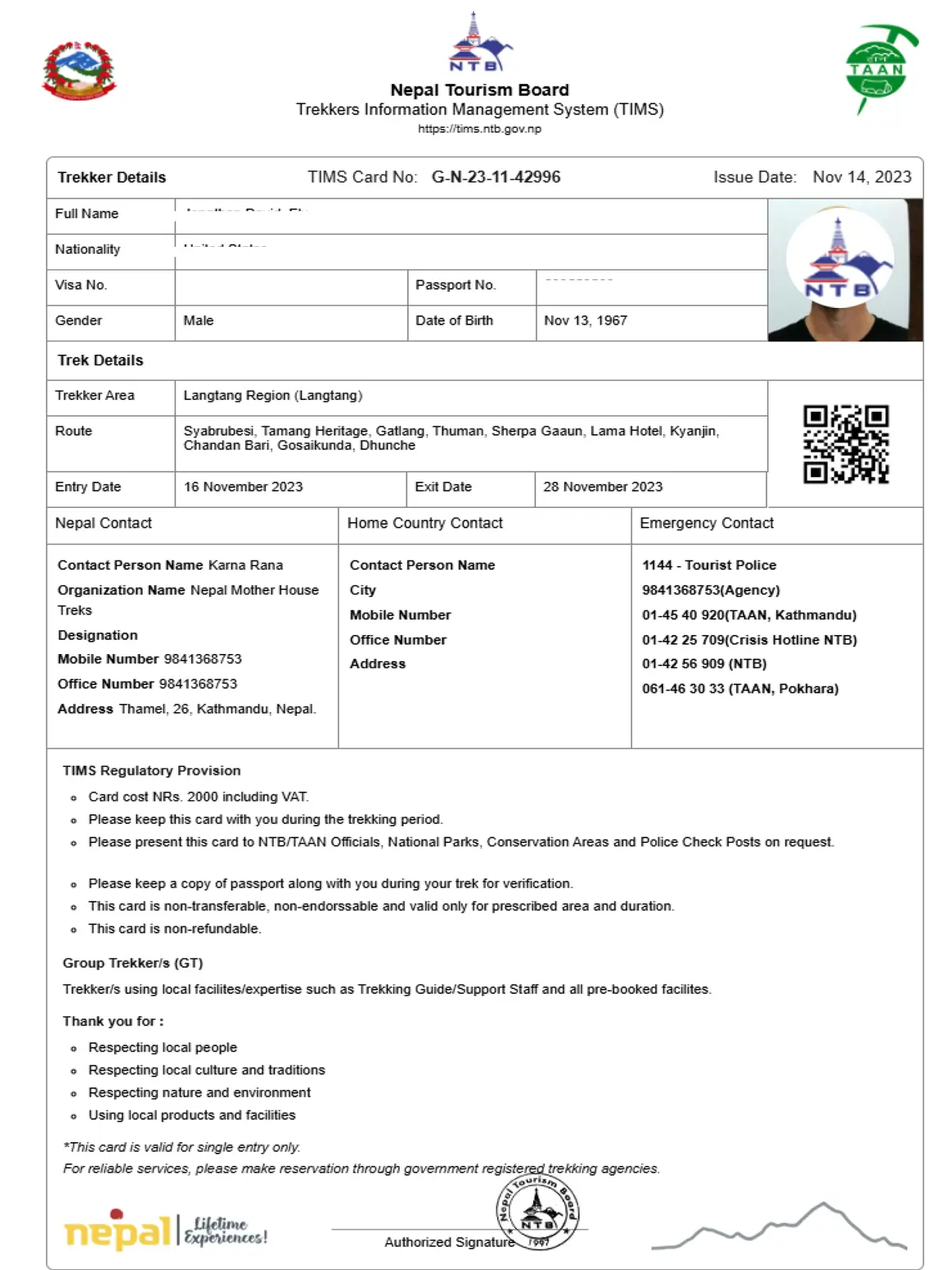
Where can one obtain a TIMS permit?
A TIMS permit can be obtained from the head office of TAAN in Kathmandu as well as in Pokhara. The documents required for the TIMS are a valid passport, passport-size photographs, and relevant details about the trekking itinerary.
What is the fee for obtaining a TIMS permit?
The fee for obtaining a TIMS permit varies depending on the country. The SAARC countries charge the permit at Rs 1000, approximately $8 to $10 per person. It is typically Rs 2000 in third-world countries, which is roughly $16 to $20 per person, depending on the exchange rate the next day.
*Note: TIMS is not required for children under the age of 10, but online data collection is available.
2. National Park Permits
The National Park Permits are the permits that grant access inside the perimeter of a specific National Park. A permit is not just essential for trekking activities; it is necessary for visiting the National Park as well. These permits serve as a way to manage and regulate the flow of tourists and maintain the ecological aspects of national parks.
Furthermore, the fees collected from the permits contribute to the conservation and protection of the respective parks. Furthermore, the fund is utilized for various activities like trail maintenance, wildlife protection, and conservation efforts.
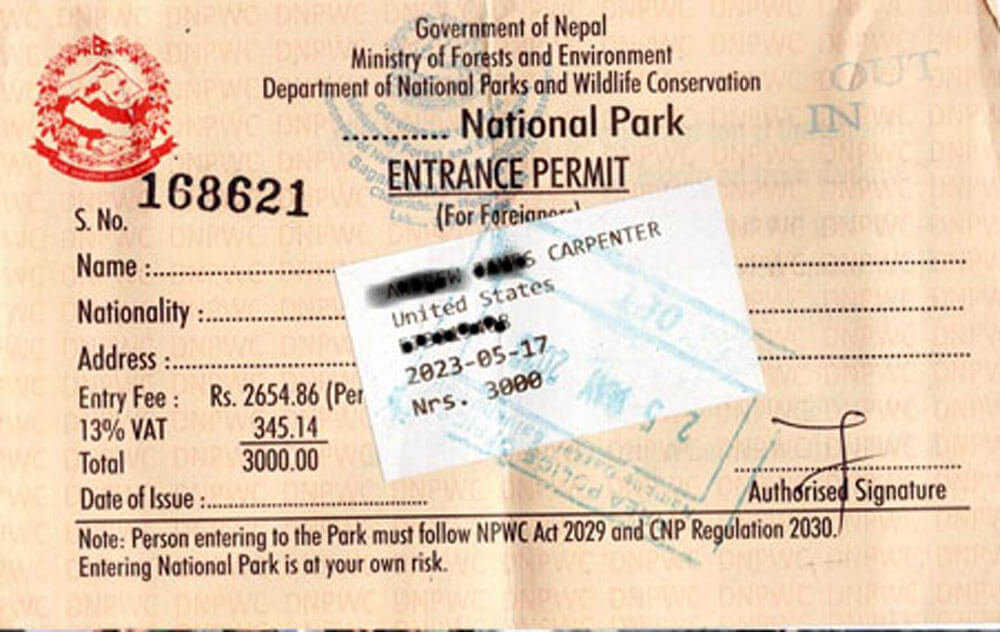
Where can you get national park permits?
A national park permit can be obtained from the board office of the Nepal Tourism Board in both Kathmandu and Pokhara. For convenience, you can get a permit from the respective park office or entry point to the park. The documents required for the permit are valid passport details, a passport-size photo, and information about trekking routes and duration. While trekking in the Khumbu area for the Everest Base Camp Trek, Gokyo Lakes Trek, Everest 3 Pass Trek, Chola Pass Trek, etc., you can buy Sagarmatha National Park permits at the entrance gate of Manjo Village and Langtang National Park at the entrance gate of Dhunche.
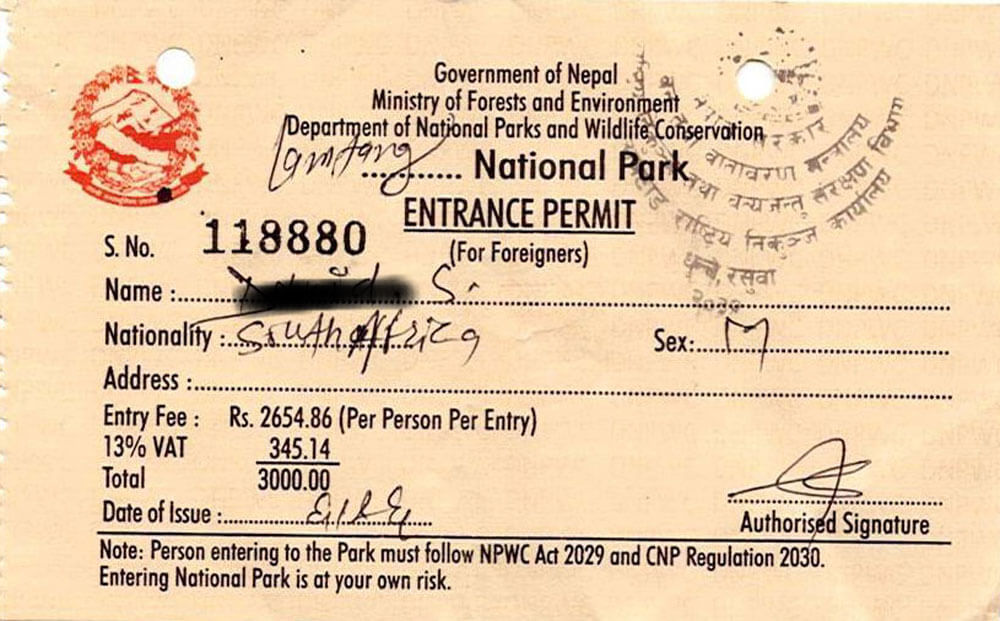
The permits are valid for a specific period or until you get an ‘Exit’ stamp on your permit. The permit allows only a single entry. equires the permit, and if you fail to present a genuine permit, it can lead to penalties.
National Park Permits Fee
The table below displays the permit fees of a specific national park in Nepal:
| SN. | Names of National Parks | For Nepali | For SAARC | For Foreigner |
| 1. | Chitwan National Park | Rs 100 per person | Rs1,000/ ~$8 per person | Rs2000/ ~$16 per person |
| 2. | Sagarmatha National Park | Rs 100 per person | Rs1,500/ ~$12 per person | Rs3,000/ ~$24 per person |
| 3. | Banake National Park | Rs 100 per person | Rs750/~$6 ~$6 per person | Rs1,500/ ~$12 per person |
| 4. | Bardia National Park | Rs 100 per person | Rs750/~$6 ~$6 per person | Rs1,500/ ~$12 per person |
| 5. | Khaptad National Park | Rs 100 per person | Rs500/~$4 ~$4 per person | Rs1,500/ ~$12 per person |
| 6. | Langtang National Park | Rs 100 per person | Rs1,500/ ~$12 per person | Rs3,000/ ~$24 per person |
| 7. | Makalu-Barun National Park | Rs 100 per person | Rs1,500/ ~$12 per person | Rs3,000/ ~$24 per person |
| 8. | Parsa National Park | Rs 100 per person | Rs750/~$6 ~$6 per person | Rs1,500/ ~$12 per person |
| 9. | Rara National Park | Rs 100 per person | Rs1,500/ ~$12 per person | Rs3,000/ ~$24 per person |
| 10. | Shey-Phoksundo National Park | Rs 100 per person | Rs1,500/ ~$12 per person | Rs3,000/ ~$24 per person |
| 11. | Shivapuri-Nagarjun National Park | Rs 100 per person | Rs600/~$5 ~$5 per person | Rs1,000/ ~$8 per person |
| 12. | Shuklaphanta National Park | Rs 100 per person | Rs750/ ~$6 per person | Rs1,500/ ~$12 per person |
3. Conservation Area Permits
Conservation Areas in Nepal are established under the National Park and Wildlife Conservation Act to conserve flora and fauna, the livelihood of indigenous people, and cultural and religious values. There are a total of six conservation areas with distinct geography and biodiversity. Furthermore, a valid permit is required to enter the specific conservation area.
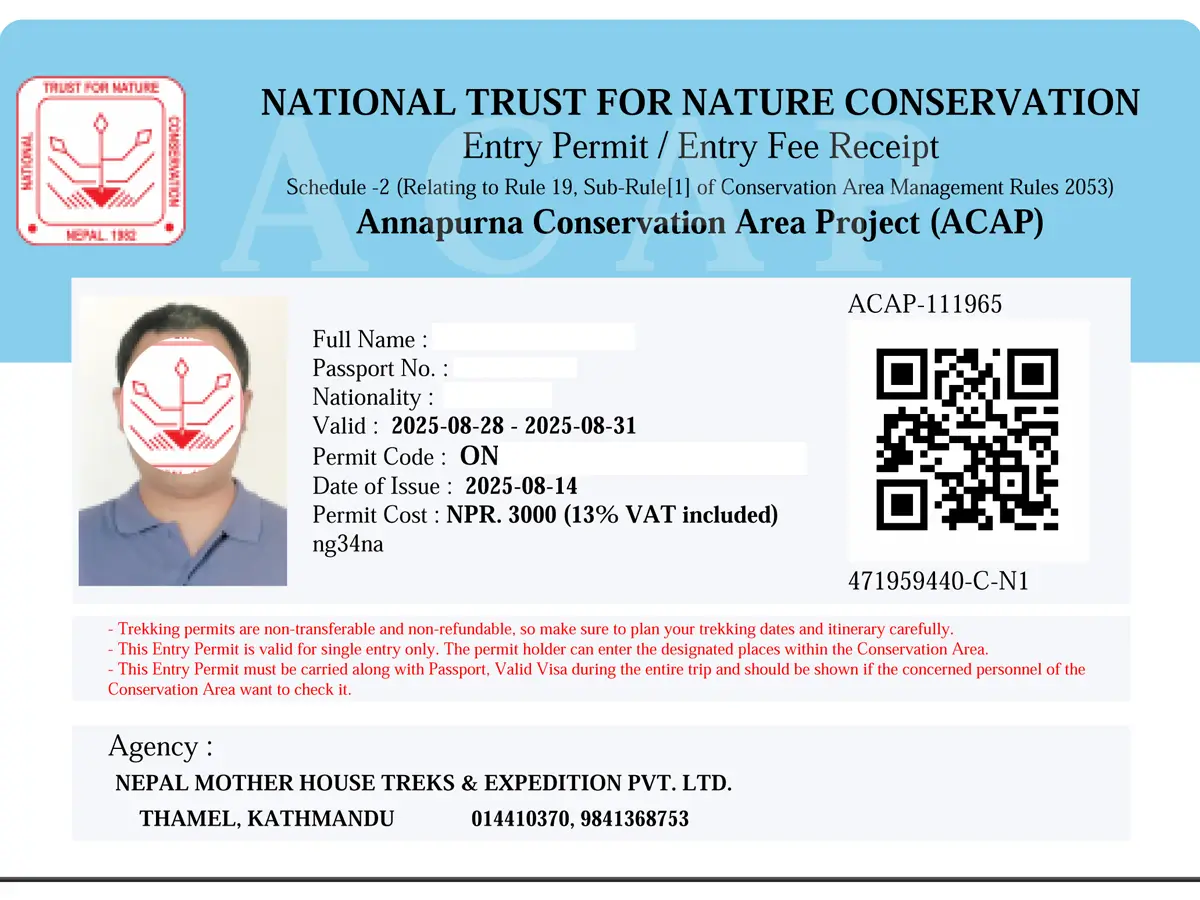
The primary purpose of conservation areas in Nepal is to preserve and protect the diverse ecosystem, wildlife, and natural resources within their boundaries. Each conservation area is known for its unique features and characteristics. For example, Annapurna Conservation Area is renowned for its diverse biodiversity with rare flora and fauna, while Manaslu Conservation Area is rich in cultural and religious value, and Kanchenjunga Conservation Area showcases the stunning landscape and remote villages.
Where can you get Conservation Area Permits?
Conservation area permits can be obtained from the head office of Nepal Tourism. As usual, the head office is available in both Kathmandu and Pokhara. The documents required to obtain a permit are a valid passport, passport-size photographs, a guide and porter name list, and details of the trekking route.
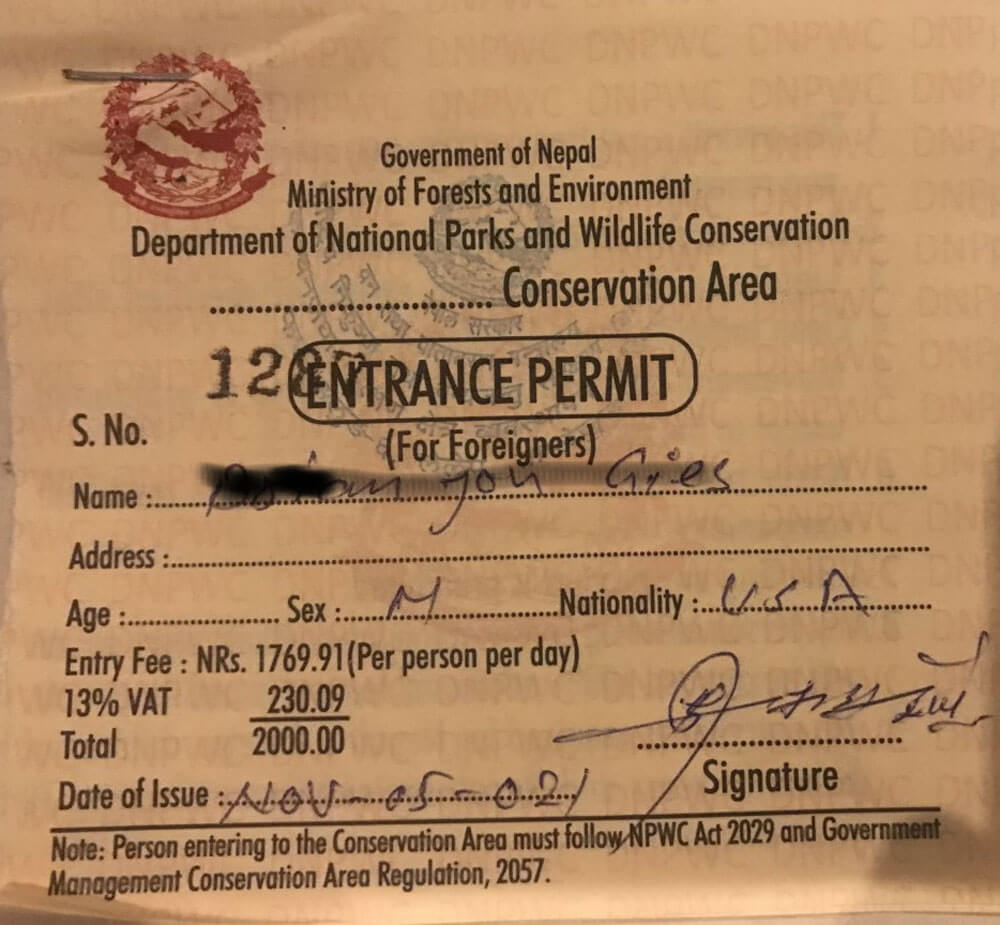
Likewise, permit funds are utilized for maintaining trekking trails, saving culture and tradition, and protecting diverse ecosystems. It is recommended to get a permit from the head office because, at the entry point, the authority charges double the price as penalties if you fail to present a valid permit. The permit is for single entry only.
Conservation Area Permit Fee
The permit fees for the conservation area are provided below:
| SN | Names of Conservation Areas | For Nepali | For SAARC | For Foreigners |
| 1. | Annapurna Conservation Area | Rs 100 per person | Rs1,000/ ~$8 per person | Rs3,000/ ~$24 per person |
| 2. | Manaslu Conservation Area | Rs 100 per person | Rs1,000/ ~$8 per person | Rs3,000/ ~$24 per person |
| 3. | Api Nampa Conservation Area | Rs 100 per person | Rs500/~$4 ~$4 per person | Rs2000/ ~$16 per person |
| 4. | Blackbuck Conservation Area | Rs 100 per person | Rs500/~$4 ~$4 per person | Rs2000/ ~$16 per person |
| 5. | Kanchenjunga Conservation Area | Rs 100 per person | Rs500/~$4 ~$4 per person | Rs2000/ ~$16 per person |
| 6. | Gaurishanker Conservation Area | Rs 100 per person | Rs1,000/ ~$8 per person | Rs3,000/ ~$24 per person |
*Note: Travelers under 10 years of age do not require permits.
4. Wildlife Reserve And Hunting Reserve Permit
Wildlife reserves and hunting reserves are two different reserve areas designated for different reasons in Nepal. There is only one wildlife reserve and one hunting reserve; they are Koshi Tappu Wildlife Reserve and Dhorpatan Hunting Reserve. They both require permits for trekking as well as other activities.
As both have different purposes, Koshi Tappu Wildlife Reserve serves to conserve and protect wildlife species and their natural habitats. Other programs include anti-poaching operations and wildlife monitoring with government agencies, conservation organizations, and local communities. The reserve also offers tourism activities like wildlife safaris, bird watching, and trekking.
The Dhorpatan Hunting Reserve is the sole hunting reserve in Nepal. The main purpose of this reserve is to manage and regulate controlled hunting activities sustainably. Only this area allows hunting to maintain the ecosystem's balance by controlling population numbers and collecting revenues.
Where can you get Wildlife Reserve and Hunting Reserve Permits?
A permit for Koshi Tappu Wildlife Reserve is available at the Nepal Tourism Board (Kathmandu and Pokhara) or the entry point of the reserve. You can obtain a permit for Dhorpatan Hunting Reserve from the Department of National Park and Wildlife Conservation in Kathmandu. Furthermore, it is available at the head office of Dhorpatan Hunting Reserve, which is located in Baglung.
The Wildlife Reserve and Hunting Reserve permit fee is applicable.
The permit fees for the wildlife reserve and hunting reserve are below:
| SN | Name of reserves | For Nepali | For SAARC | For Foreigner |
| 1. | Koshi Tappu Wildlife Reserve | Rs 100 per person | Rs750/~$6 ~$6 per person | Rs1,500/ ~$12 per person |
| 2. | Dhorpatan Hunting Reserve | Rs 100 per person | Rs1,500/ ~$12 per person | Rs3,000/ ~$24 per person |
*Note: Below 10 years is free.
There is a hunting permit fee in Dhorpatan Hunting Reserve.
Hunting permits are different from regular permits in the Dhorpatan Hunting Reserve. Moreover, legal papers and a special permit are required before beginning hunting activities. The permit can be applied for at the Department of National Park and Wildlife Conservation in Kathmandu and the Dhorpatan Hunting Reserve Office in Baglung.
Dhorpatan Hunting Reserve allows hunters to hunt blue sheep and other game animals. It will cost you $2,000, including the license and local permits. But if you want to step up your hunting game, it will cost $8,900 for one Himalayan tahr.
5. Restricted Area / Special Permit
Nepal has some areas classified as restricted , requiring special permits for entry. These restricted areas are often located in remote and sensitive regions with unique cultures, traditional settlements, and geopolitical significance. A special permit helps in monitoring and managing tourism activities to protect the fragile ecosystem and flora and fauna.
Restricted special permits often have higher fees compared to regular trekking permits. The reason for higher fees is to enhance the traditional settlements by modernizing and developing the infrastructure and lifestyle of the people. Furthermore, special permits ensure responsible tourism practices, respect local customs, and follow conservation guidelines.
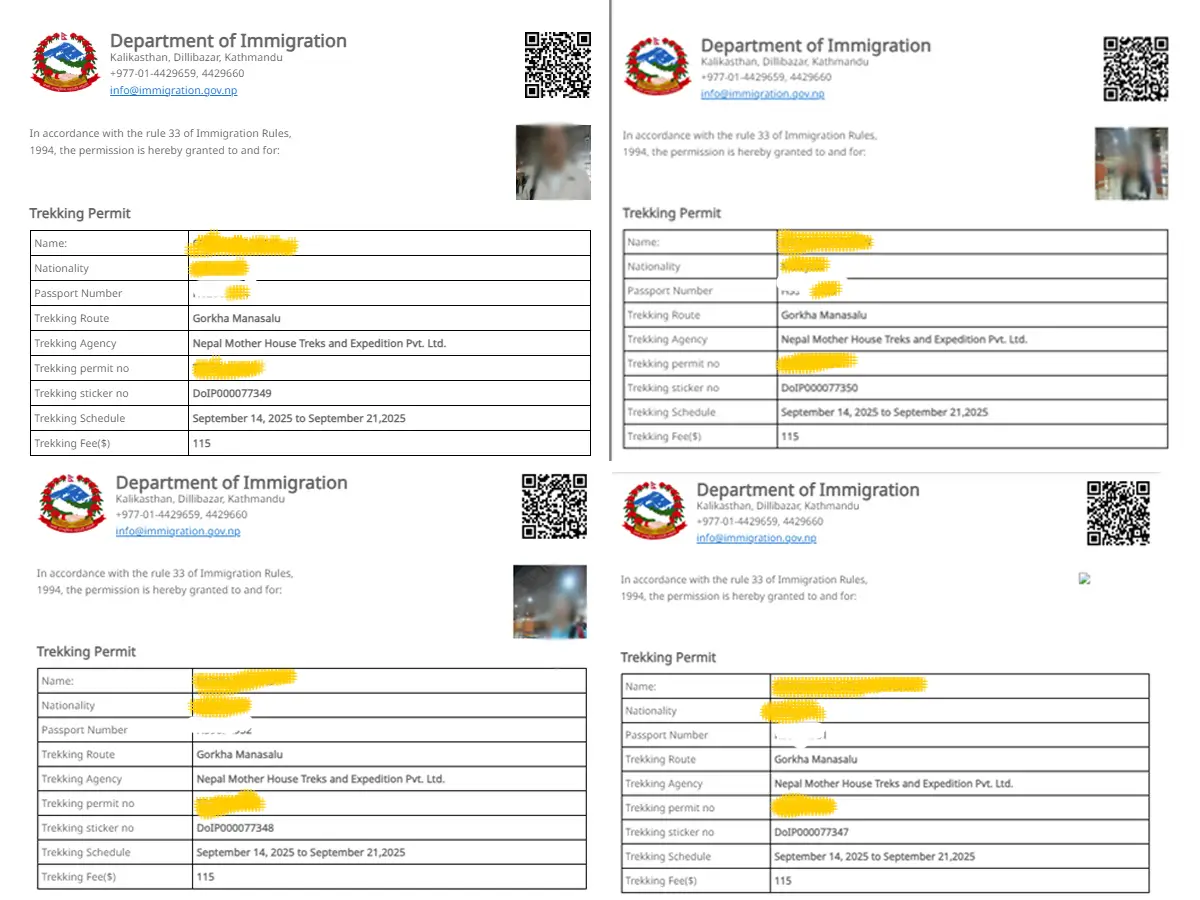
Where can you get Restricted Area Special Permits?
The Nepali government issues a special permit for the restricted areas. You can collect the permits from the Department of Immigration after fulfilling specific requirements. The Department of Immigration office in Kathmandu is established in different regions of Nepal; however, it is recommended to prepare a special permit in Kathmandu.
What documents are required to obtain special permits for restricted areas in Nepal?
Traveling with authorized trekking guides and using registered trekking agencies are requirements for a special trekking permit. There must be two trekkers. The Government of Nepal regulates the restricted and strictly forbids FIT (Free Individual Trekkers). Other documents, such as a valid original passport and details regarding trekking routes, are required. For restricted trekking, you are not allowed to go as FIT (Free Individual Trekkers); you need to hire at least a professional trekking guide from the authorized trekking company.
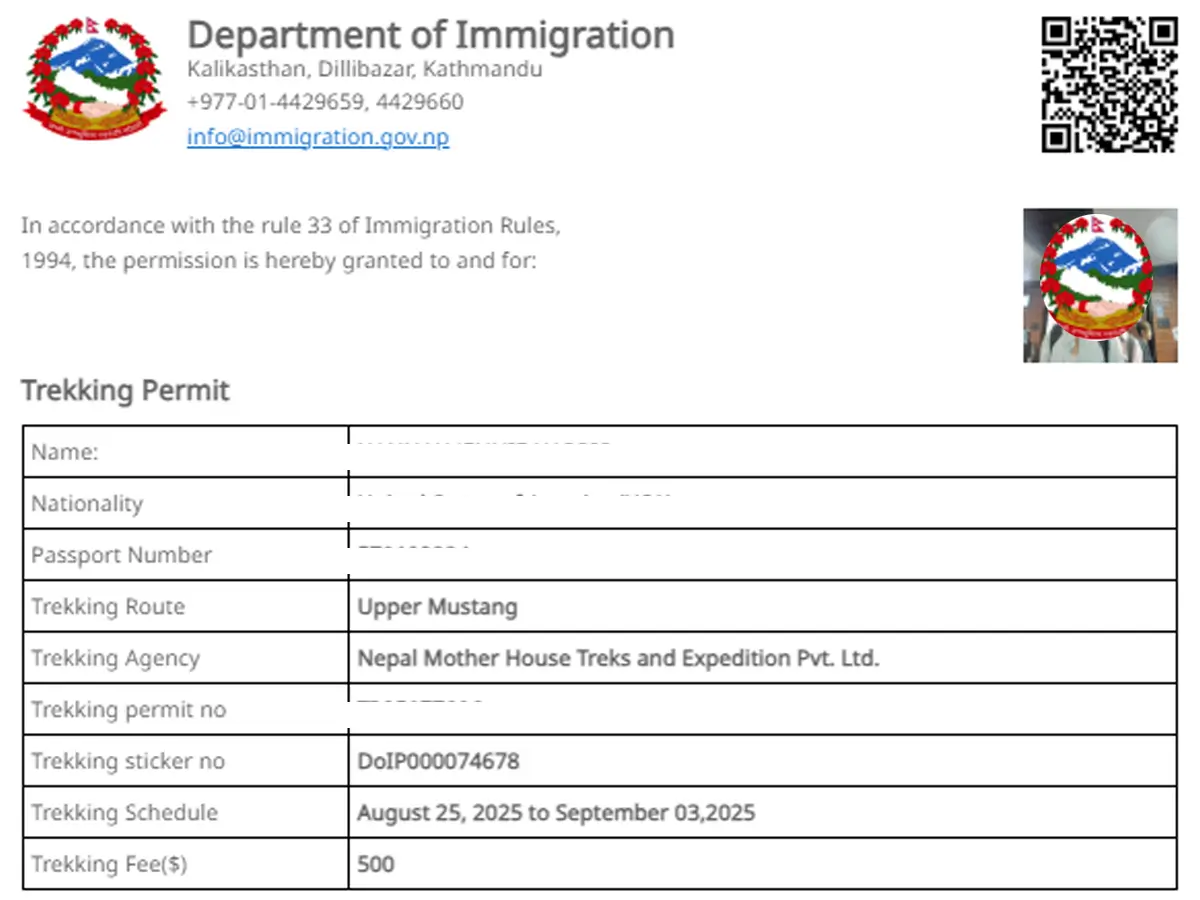
Only authorized trekking companies can apply for trekking permits along with the following documents:
Submit the online application form (trekkers passport number and Nepal visa number) accordingly and print out the gist, attached along with these documents below.
- Copy of Passport and Visa, which must be validated for entire trekking days
- Name lists of trekkers
- Trekking Program Schedule and Date
- Guarantee letter of Agency
- Agreement with Agency
- Program schedule of trekking
- Voucher of Bank Payment (fees in USD) for Permits
- Tax clearance Certificate of Trekking Agency's latest fiscal year
- Insurance of the trekkers (foreign nationals) and Nepalese staff name list accompanying the trekkers with specific trekking area valid during the trek
- the permit granted by the Ministry of Tourism, Culture, and Civil Aviation to run a trekking business
- The Central Bank of Nepal (Nepal Rastra Bank) has granted a license allowing currency exchange.
- Registration Certificate of Permanent Account Number (PAN/VAT)
- Even though you provided your passport information when applying for a Nepal visa, the immigration officer will still request the original passport of every trekker.
Restricted Area’s Special Permits Fees.
As mentioned above, special permit fees are higher than regular permits. The table below breaks down the cost of special permits:
| SN | Name of Restricted Area or Region | Special Permit Fees |
| 1. | Upper Mustang | USD 500 per person for the first 10 days USD 50 per person per day beyond 10 days |
| 2. | Upper Dolp | The cost is USD 500 per person for the first 10 days. Each person will receive USD 50 per day for a period exceeding 10 days. |
| 3. | Lower Dolpo | September – November December – August |
| 4. | Gorkha Manaslu Area (Nubri) | September – November December – August |
| 5. | Gorkha Tsum Valley | September – November December – August |
| 6. | Humla | USD 50 per person for 1 week. The cost per person increases by USD 10 per day after the first week. |
| 7. | Taplejung (Kanchenjunga) | USD 20 per person per week for the first 4 weeks. The fee increases to USD 25 per person per week after the first four weeks. |
| 8. | Nar Phu Valley | September – November December – August |
| 9. | Mugu (Rara) | USD 100 per person for a week. The cost per person increases by USD 15 per day after the first week. |
*Note: No trekking permit is required below 10 years old.
**Note: The trekking fee for every country and the special permits are the same, including SAARC countries.
***Note: In the case of the Upper Mustang and Upper Dolpa Region, if the royalty paid for the mountain expedition is less than the fee for the trekking permit, then the difference amount should be paid.
6. Rural Municipality Area Permit.
A rural municipality area permit is somehow similar to a special permit for a restricted area. The difference is that it grants access to some of the rural parts of Nepal that are still untouched by development and modernization. This permit introduces the lifestyle, unique settlements, and daily routine of rural people.
The purpose of the Rural Municipality Area Permit is to improve the lifestyle, medical and educational facilities, and environmental conservation of the area. Every rural municipality has its own characteristics and features, as well as distinct ethnic groups. Trekking in this area is a different experience than on other popular trekking routes.
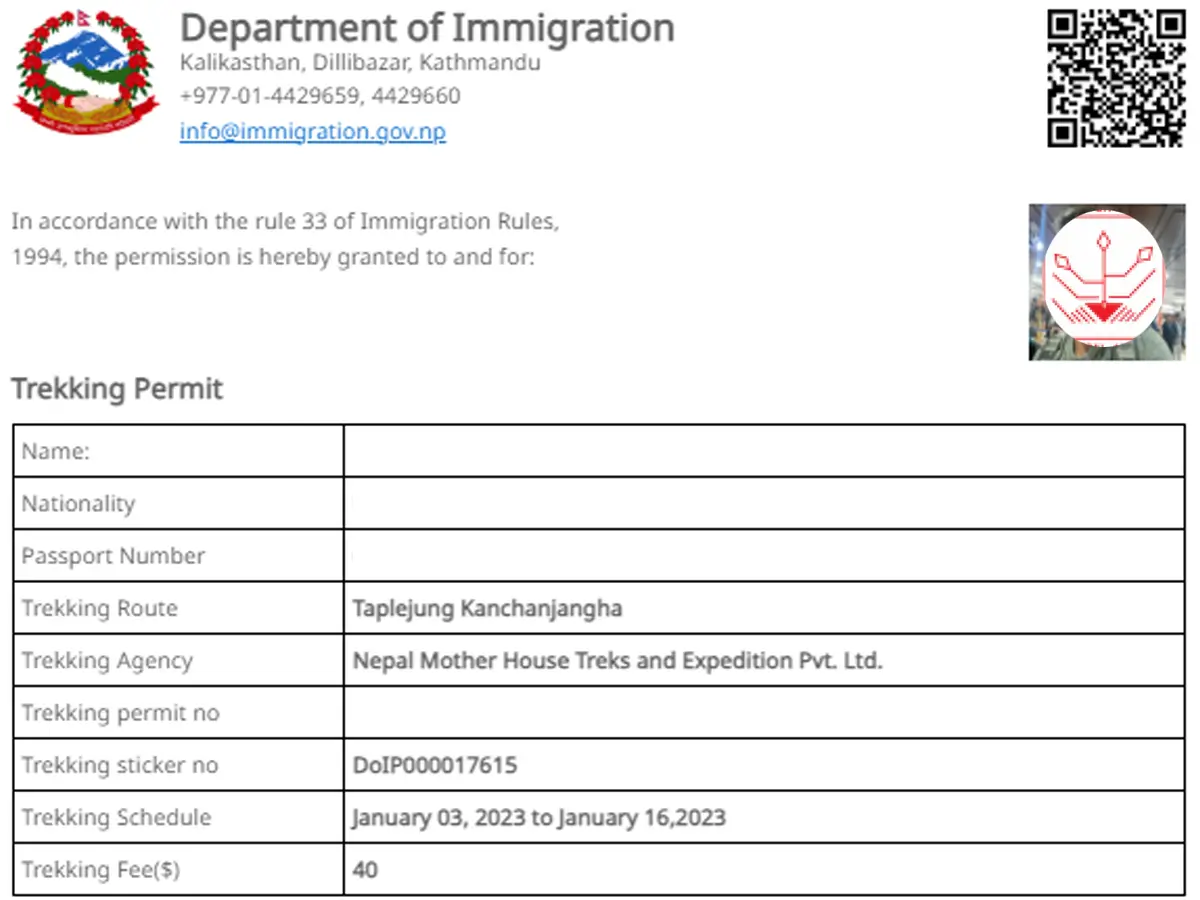
Where can you get rural municipality permits?
Well, it depends on which trek you are going on: a restricted area or a normal trekking area. The Department of Immigration distributes the permits if the trekking route you are taking is in a restricted area.
However, you can obtain other normal trekking area permits at the region's entry point. The local government permits for Everest Trekking are known as "TREK CARD," which can be obtained at the check post of Pasang Lhamu Rural Municipality at Lukla/Namche. The local government of Pasang Lhamu Rural Municipality changed the Trek Cards fee on July 17, 2024. Accordingly, the updated fee for Trek Cards is Rs. 3,000 for all trekkers and Rs. 2,000 for Chinese and SAARC (South Asian Association for Regional Cooperation) countries. The last cost of trekking permits was Rs. 2,000 per person for foreign trekkers. Similarly, children under the age of ten are free; no Trek Cards are required; simply submit a valid passport or certificate.
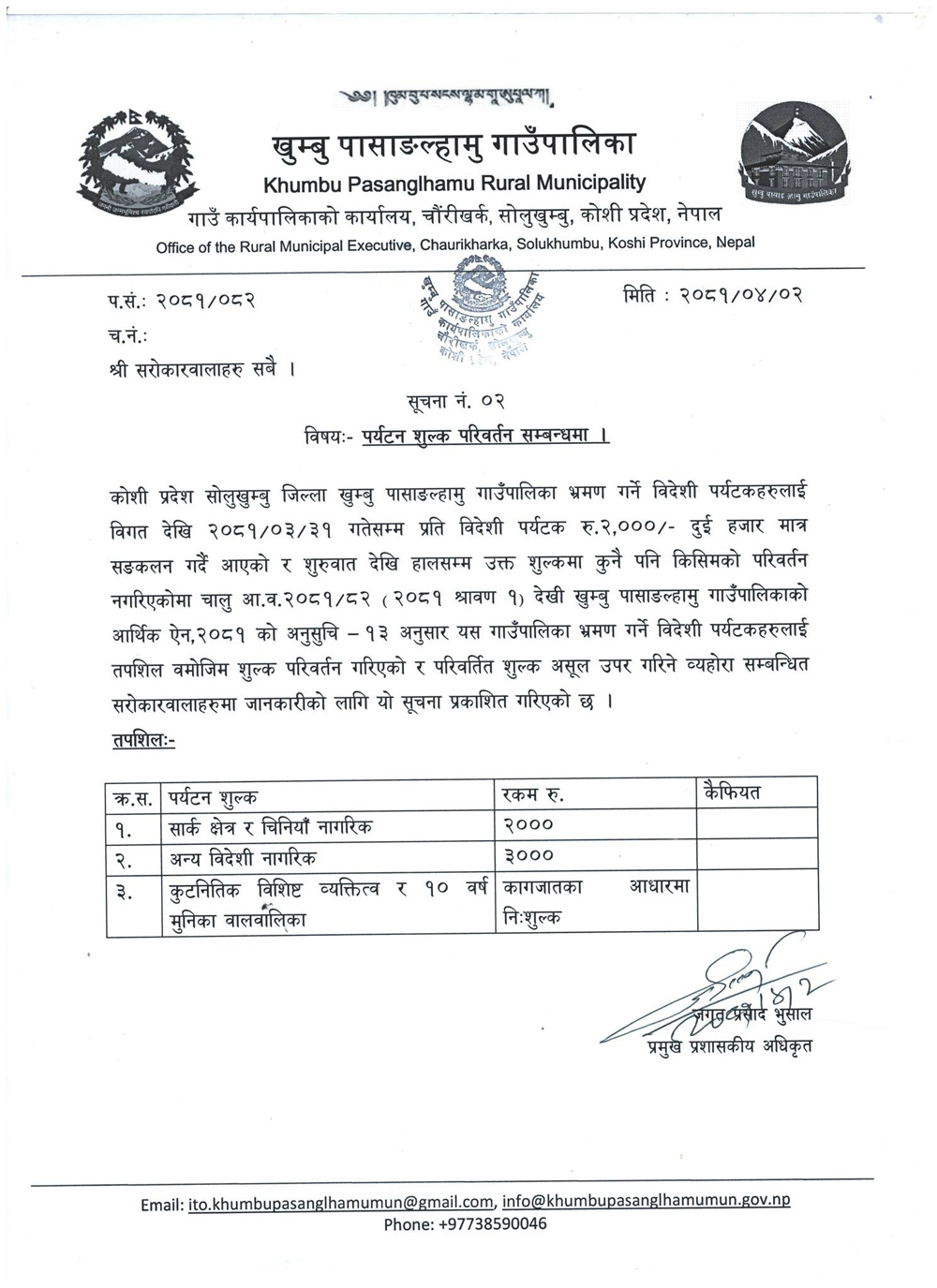
Recently, a local government fee for visitors to the Manaslu and Tsum Valley trek, Manaslu Circuit Side trek, Manaslu Circuit Trek, and Manaslu Circuit Trek with Serang Gumba has been required. According to the president of the local government of Tsum Nubri Rural Municipality of Gorkha, every domestic and international visitor needs to pay NPR 200 and 1000, respectively.
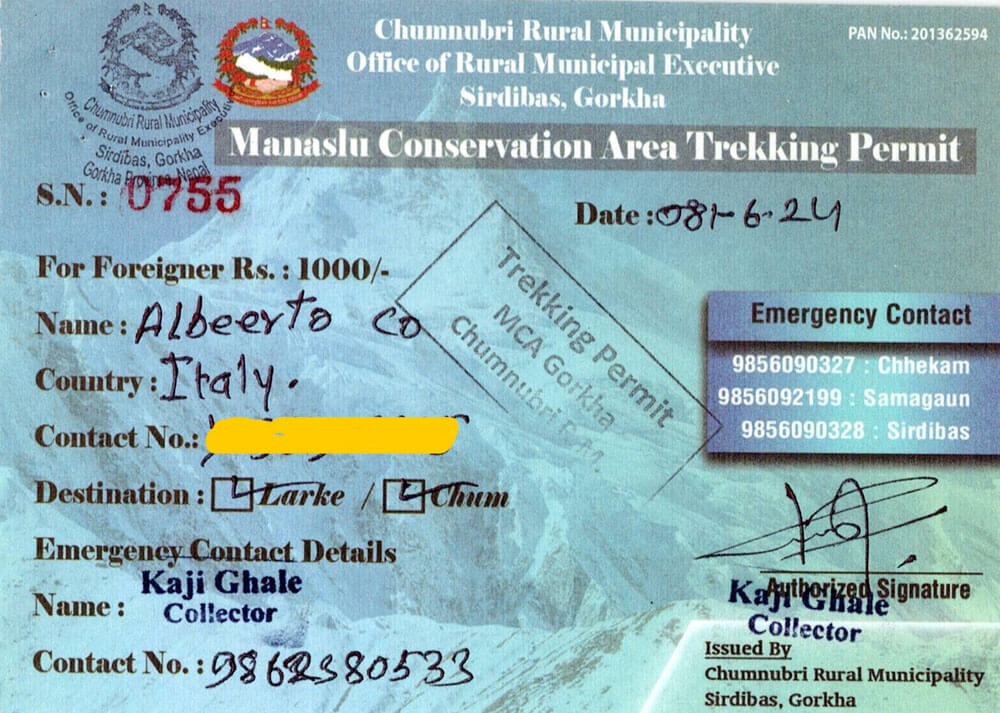
The fee goes to the local communities for the environmental conservation of Chumanuwri and the Manaslu Conservation Area, whereas the other permits, like restricted area permits and Manaslu Conservation Area fees, are not distributed to the stockholders of the Manaslu. So, Tsum Nubri Rural Municipality has declared the visitor fee on September 6th, 2024.
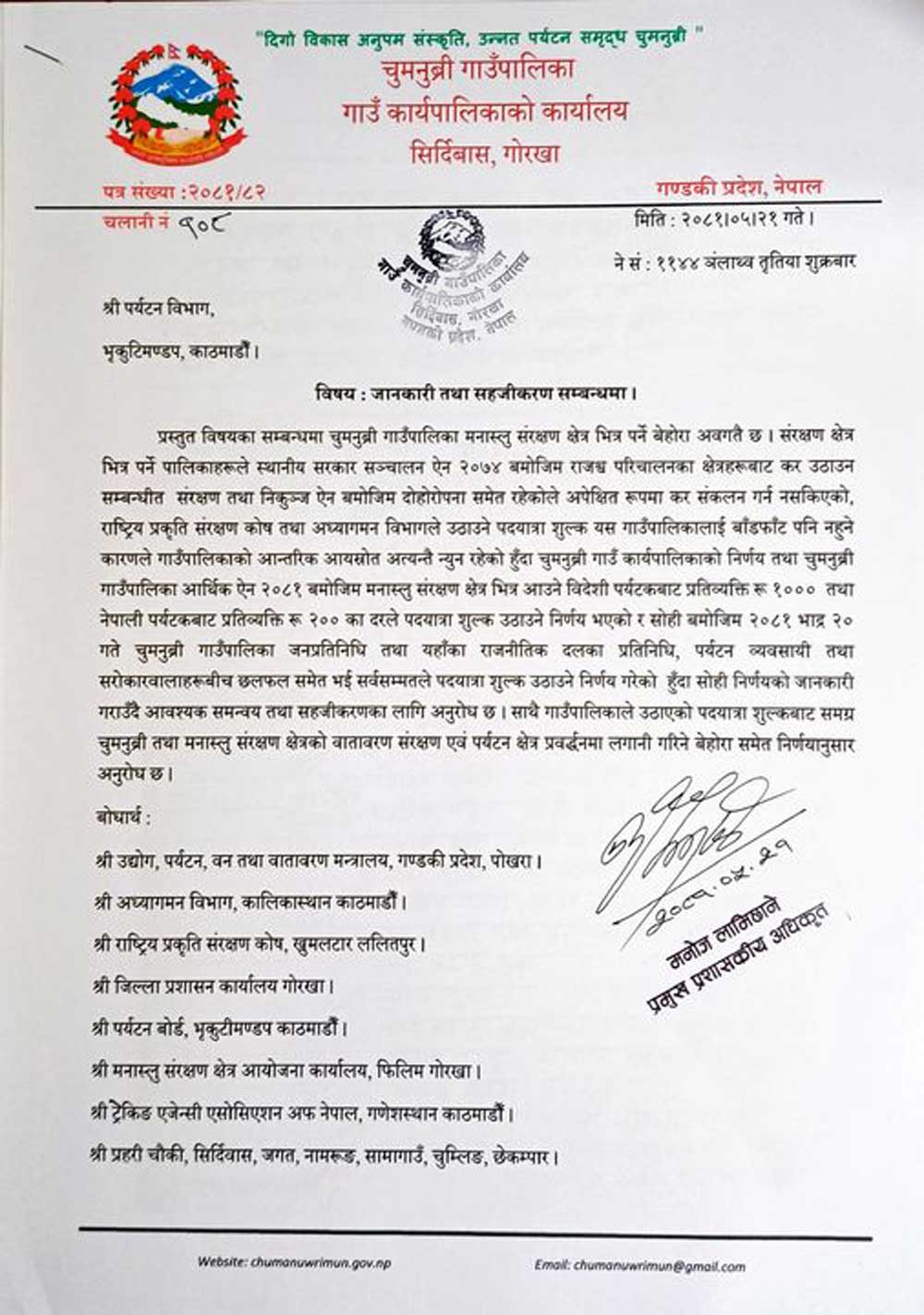
We recommend that registered travel agencies prepare the permit. The essential documents for making permits are a valid passport, passport-size photos, and a relevant trekking itinerary. If the Nepali government regulates these trekking areas, they are also in the restricted area. You must obtain these trekking permits in accordance with the rules for restricted areas.
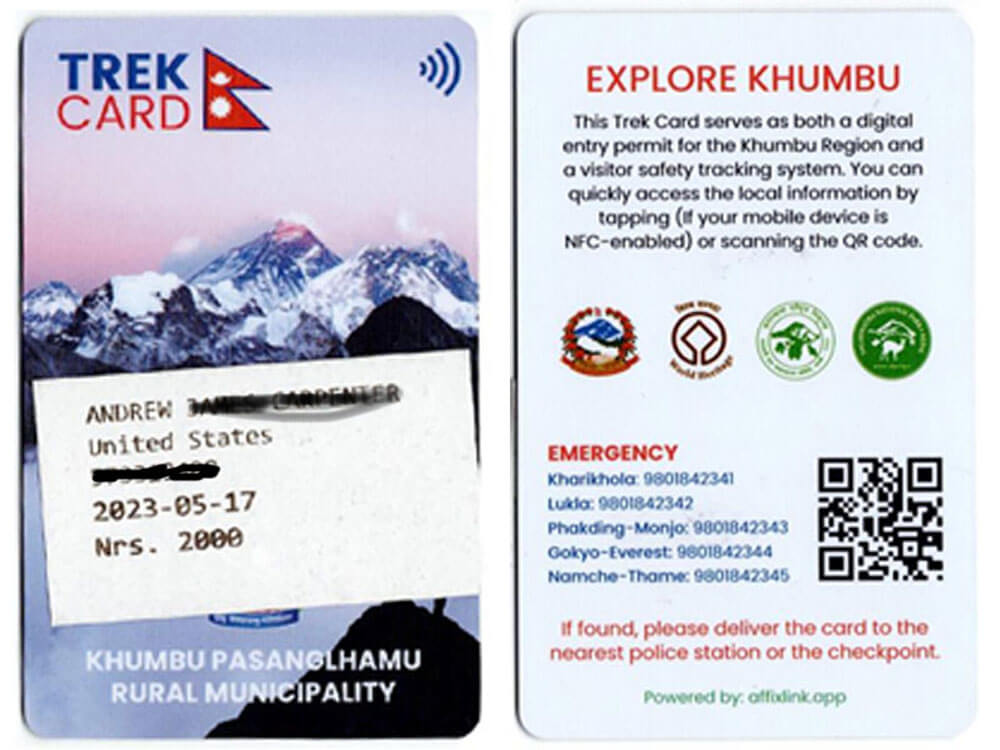
Rural Municipality Area Permits Fee.
The below table shows the region along with the name of the rural municipality and their permit fees, respectively:
| SN | Name of region/rural municipality | Permit Fees |
| 1. | SoluKhumbu. Khumbu Pasang Lahmu Rural Municipality. | USD 20 per person per week for the first 4 weeks. The fee increases to USD 25 per person per week after the first four weeks. |
| 2. | Sankhuwasabha. Bhot Khola Rural Municipality. b. Makalu Rural Municipality. | USD 20 per person per week for the first 4 weeks. The fee increases to USD 25 per person per week after the first four weeks. (for both rural municipalities) |
| 3. | Dolakha. a. Gaurishankhar Rural Municipality. b. Bighu Rural Municipality. | USD 20 / person per week. (for both rural municipalities) |
| 4. | Rasuwa. Gosainkunda Rural Municipality. | Each person receives USD 20 per week. |
| 5. | Bajhang. Saipal Rural Municipality. | USD 90 per person for the first week The cost per person increases by USD 15 per day after the first week. |
| 6. | Darchula. Vyas Rural Municipality. | USD 90 per person for the first week The cost per person increases by USD 15 per day after the first week. |
Conclusion
Nepal offers countless trekking trails across the country, with different landscapes and vibrant cultures and traditions. So, before heading toward your memorable journey through the Himalayas, it is crucial to obtain legal papers and specific permits for the area. Therefore, get the required permits for a stress-free journey and be a part of the development of the country. If you are traveling solo or with a group, family, or couple, we at Nepal Mother House are glad to organize trekking permits for the Upper Mustang Trek, Nar Phu Valley Trek, Manaslu Circuit Trek, Kanchenjunga Trek, Annapurna Base Camp, Langtang Valley Trek, Everest Base Camp Trek, etc., according to your requirements. Thank you.

